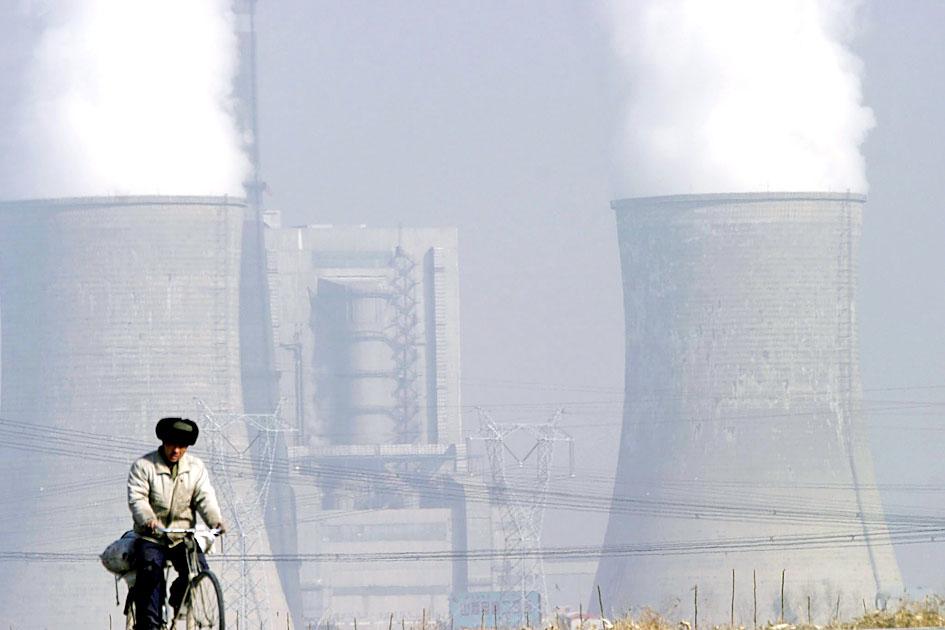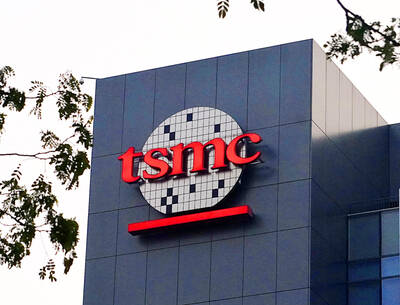A villain is emerging in China’s efforts to rein in its energy prices: inefficient, power-hungry industry.
With flooding in the coal hub of Shanxi Province driving prices up to 1,508 yuan (US$234) a metric tonne even as the government tries to kick-start extra production, further measures are clearly needed to prevent more generators cutting off their turbines and causing blackouts through the cold of northern China’s winter. That means a crackdown on the factories that still consume the lion’s share of electricity.
Industry makes up only 25 percent of grid demand in the US, but in China it is fully 59 percent of the total — more than all the country’s homes, offices and retail stores put together.

Photo: EPA-EFE
Cheap power has been an essential tool of development, and the government has traditionally encouraged major users with electricity tariffs that get cheaper the more you consume. With about two-thirds of the grid powered by coal, the cost of digging up the black stuff has determined how much industrial users pay for their power.
The problem is that coal is not getting any cheaper. After a sustained period of deflation prior to 2016, when a glut of dangerous and unregulated mines was closed down, annualized costs jumped 40 percent in 2017. They did not really fall again until COVID-19 struck, and they have since rebounded with a 57 percent increase from 12 months earlier in August.
Such increases might be tolerable if end-users were turning this power into high-value goods — but all too often, that is not the case. China consumes more electricity per capita than the UK and Italy, but comes nowhere close in terms of economic output.
Determined to hit Chinese President Xi Jinping’s (習近平) targets on peaking emissions by 2030 and hitting net zero by 2060, Beijing’s policy makers have fixed on so-called “dual high” sectors — those whose energy consumption and carbon emissions are both elevated — as the culprits.
These are many of the industries that have grown fastest in the past few decades, such as cement, steel, base metals, oil refining, chemicals and glass. They collectively account for more than half of China’s emissions.
Under revised rules issued by the economic planners at the Chinese National Development and Reform Commission this week, residential and agricultural consumers would still buy power at fixed tariffs and smaller users would see electricity costs fluctuate within a band.
“Dual-high” sectors, on the other hand, would see no guardrails on the prices they pay. As a result, all the cost of balancing utilities’ books would fall on their shoulders.
This would reduce the demand pressure on the grid and encourage inefficient users to upgrade to add more value, Wan Jinsong, the commission’s director of prices, told a news conference on Tuesday.
This sounds like a neat solution — but we should not underestimate the way ripples will spread. In the past few decades, the world has become hooked on cheap Chinese power for making a host of its goods. About half of all metal is produced in China and nearly one-fifth of all oil is refined there. Energy-hungry products from aluminum to solar panels to bitcoin depend on the country’s low industrial power tariffs to keep their own prices down.
With electricity costs for dual-high industries set to rise, we might not have seen the end of the inflationary pressures flowing through the global economy from those flooded Shanxi mines.
If Beijing wants to manage this transition without crippling the economy, it is going to need to release pressure on the supply side of the energy system at the same time as taking measures to reduce demand growth.
That is where renewables come in. At the same time that price curbs are being removed from dual-high industries, so capacity curbs are being lifted from zero-carbon power generation. Provinces previously faced absolute limits on the amount of electricity they were allowed to consume, a factor that might have contributed to the most recent cuts. In the future, those bars would be removed for renewable generation, giving governors a strong incentive to switch away from constrained, inflationary coal-fired energy to unlimited, fixed-cost wind and solar.
With zero-carbon electricity already cheaper than most existing operating coal power plants, those changes might be just the spur to wean China from its addiction to solid fuel. The bulk of generation would be able to move to wind, solar, hydro and nuclear. Thermal power plants would increasingly find themselves ramping up and down to capture daily peaks in demand, with differential pricing through the day giving them the opportunity to make profits after the sun has set and when the wind drops.
All that is needed to make this system work more efficiently is for Beijing to unleash the formidable investment appetites of its provincial governments on the banquet of cheap zero-carbon power now available.
Until now, China has shied away from the sort of rapid transition that it, and the global climate, needs. The teetering state of its coal-fired power system ought to be just the catalyst to accelerate that shift.
David Fickling is a Bloomberg Opinion columnist covering commodities, as well as industrial and consumer companies. He has been a reporter for Bloomberg News, Dow Jones, the Wall Street Journal, the Financial Times and the Guardian.
This column does not necessarily reflect the opinion ofthe editorial board or Bloomberg LP and its owners.

CHIP RACE: Three years of overbroad export controls drove foreign competitors to pursue their own AI chips, and ‘cost US taxpayers billions of dollars,’ Nvidia said China has figured out the US strategy for allowing it to buy Nvidia Corp’s H200s and is rejecting the artificial intelligence (AI) chip in favor of domestically developed semiconductors, White House AI adviser David Sacks said, citing news reports. US President Donald Trump on Monday said that he would allow shipments of Nvidia’s H200 chips to China, part of an administration effort backed by Sacks to challenge Chinese tech champions such as Huawei Technologies Co (華為) by bringing US competition to their home market. On Friday, Sacks signaled that he was uncertain about whether that approach would work. “They’re rejecting our chips,” Sacks

Taiwan’s long-term economic competitiveness will hinge not only on national champions like Taiwan Semiconductor Manufacturing Co. (TSMC, 台積電) but also on the widespread adoption of artificial intelligence (AI) and other emerging technologies, a US-based scholar has said. At a lecture in Taipei on Tuesday, Jeffrey Ding, assistant professor of political science at the George Washington University and author of "Technology and the Rise of Great Powers," argued that historical experience shows that general-purpose technologies (GPTs) — such as electricity, computers and now AI — shape long-term economic advantages through their diffusion across the broader economy. "What really matters is not who pioneers

In a high-security Shenzhen laboratory, Chinese scientists have built what Washington has spent years trying to prevent: a prototype of a machine capable of producing the cutting-edge semiconductor chips that power artificial intelligence (AI), smartphones and weapons central to Western military dominance, Reuters has learned. Completed early this year and undergoing testing, the prototype fills nearly an entire factory floor. It was built by a team of former engineers from Dutch semiconductor giant ASML who reverse-engineered the company’s extreme ultraviolet lithography (EUV) machines, according to two people with knowledge of the project. EUV machines sit at the heart of a technological Cold

TAIWAN VALUE CHAIN: Foxtron is to fully own Luxgen following the transaction and it plans to launch a new electric model, the Foxtron Bria, in Taiwan next year Yulon Motor Co (裕隆汽車) yesterday said that its board of directors approved the disposal of its electric vehicle (EV) unit, Luxgen Motor Co (納智捷汽車), to Foxtron Vehicle Technologies Co (鴻華先進) for NT$787.6 million (US$24.98 million). Foxtron, a half-half joint venture between Yulon affiliate Hua-Chuang Automobile Information Technical Center Co (華創車電) and Hon Hai Precision Industry Co (鴻海精密), expects to wrap up the deal in the first quarter of next year. Foxtron would fully own Luxgen following the transaction, including five car distributing companies, outlets and all employees. The deal is subject to the approval of the Fair Trade Commission, Foxtron said. “Foxtron will be